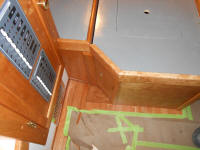
110 Cookson Lane | Whitefield, ME 04353 | 207-232-7600 | tim@lackeysailing.com
Snow Lily | Thursday, April 18, 2013
The unanticipated change in the shape of the engine box had left a corner area exposed to the hull beneath, as I'd ended the cabin sole installation according to the original opening. To hide this area, I prepared and installed a small section of wood to blend as well as possible with the surrounds; I installed the small section with a cleat along the aft side, and epoxy adhesive. Once that was in place, I made a final adjustment to a vertical corner trim at the aft end of the settee, and glued that in place as well.
I couldn't say I'd been looking forward to cutting the huge hole in the deck required for the woodstove's vent pipe deck iron, but it was time. After checking over my previous measurements to confirm the location of the stovepipe that I'd marked earlier, I drilled a pilothole through the overhead and deck above, holding the drill plumb. This gave me the location from above, and afterwards I applied masking tape all over the area to protect the adjacent surfaces.
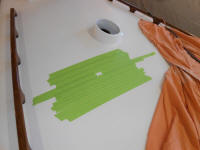
Using the teak trim ring as a guide, and with the piece leveled as needed, I cut around the outside to remove the tape within, then marked the boundaries of the cutout itself. I proceeded with care, continually convincing myself that the location was right, etc. to avoid making a mistake that would be difficult (not to mention unwelcome) to recover from.
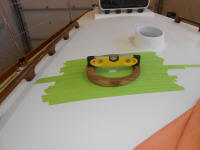
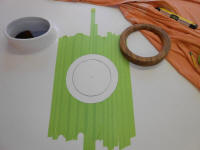
With a hole saw, I drilled through the deck inside the circle to determine the deck thickness. With the finished overhead beneath, I didn't want to cut all the way through from above; just through the deck itself. To do this, I needed to cut a saw blade to the correct length so it'd cut through the deck, but not hit or pass through the finished overhead beneath. Once I'd prepared a blade and checked everything over, I cut out the center of the opening.
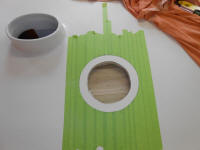
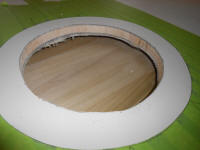
I decided to hold off on making the cut in the overhead for now, which would prevent mess and detritus from the work above from entering the cabin. When the time came, I planned to make the cut from within with a large hole saw to ensure a neat, round cutout in the overhead, but that could wait as I had other steps to complete before final deck iron installation.
The center portion of the deck iron--that which would pass into the boat and connect with the stove pipe--was too long to allow the trim and hardware to sit flush while the overhead was in place, but I used it to make a general mark on the back side of the overhead, again as a reality check.
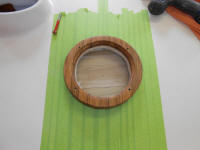
With holes drilled through the teak base in the required locations, I marked them on the deck, then used a 5/8" bit to overbore the holes, removing the core from these areas, and also reamed out the core around the edges of the large cutout. Afterwards, I filled the voids with a thickened epoxy mixture.
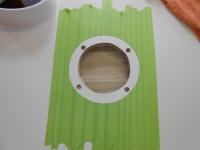


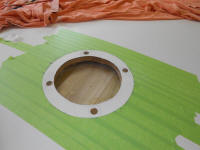
Nexxt, I lightly sanded and revarnished various trim pieces I was working on.
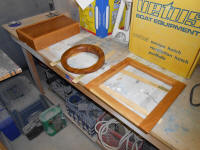
I reeved a new length of cable to the centerboard winch, and through the various sheaves to lead it forward. For now, I didn't make any final connections, as there was more work ahead on the centerboard, but I wanted to get the cable in place and run nonetheless. Reviewing various information about the system in conjunction with photos from the original layout on Snow Lily, I noticed that I didn't have the spring that was reportedly part of the tensioning system, so I ordered something I hoped would be suitable.
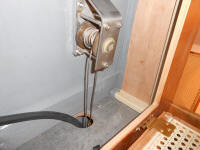
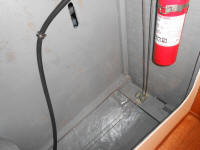
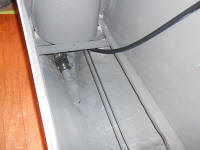
To help secure the portable generator on its shelf, I installed a pair of padeyes and a stainless steel ratchet strap.

The cockpit locker required a panel on its inboard side to prevent stowed items from sliding down into the space beneath the cockpit. From marine plywood, I cut a piece to the appropriate measurements and test-fit it; I found I had to clip the two lower corners in order to maneuver the piece into the locker, but this was just as well as it'd provide some natural drainage if needed. Then, I painted the new panel on both sides to prepare it for installation.
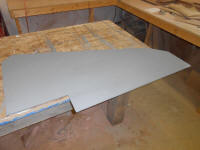
Total Time on This Job Today: 7.5 hours
